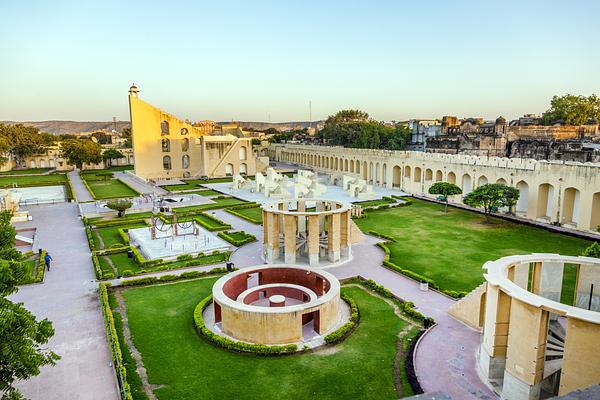Jantar Mantar - Jaipur
8 expert reviews
“Adjacent to the City Palace is Jantar Mantar, an observatory begun by Jai Singh II in 1728 that resembles a collection of bizarre giant sculptures.”
– Lonely Planet
"It's neatly laid out and equipped with simple solar instruments called yantras, which look like large, abstract sculptures, and are remarkably precise." Full review
i
Avoid the observatory at noon, as it can be very hot.
"Living proof of the genius and passion of Sawai Jai Singh, this medieval observatory is the largest of its kind in the world, and the best preserved of Jai Singh's five observatories." Full review
i
After a major upgrade of the observatory in 2007, improvements now include more visitor-friendly explanations of how everything works; alternatively, hire a guide at the gate for Rs 100 to Rs 150, but you'll do far better booking Jaimini Shastri; be sure to book him well in advance.
"The Jantar Mantar in Jaipur is sort of a park, full of huge architectural astronomical instruments built in the 18th century. It's a truly fun place to hang out and take pictures." Full review
"The world's largest sundial, made entirely out of stone. " Full review
"This is yet another UNESCO World Heritage Site you won't want to miss, especially if you're fascinated by astronomy"
Jaipur Travel Guide
March 1, 2022
"An open-air observatory dating back to 1728, Jantar Mantar is a testimony to Rajput king Sawai Jai Singh’s interest in and knowledge of astronomy."






/75.82417,26.92487,14/400x224@2x?access_token=pk.eyJ1IjoidHJpcGV4cGVydHdlYiIsImEiOiJja2Fud3l2MDcwbXZ0MndyeGF3eGI3ZWhzIn0.zLqNa1RECyZZadF8zfQM5w)